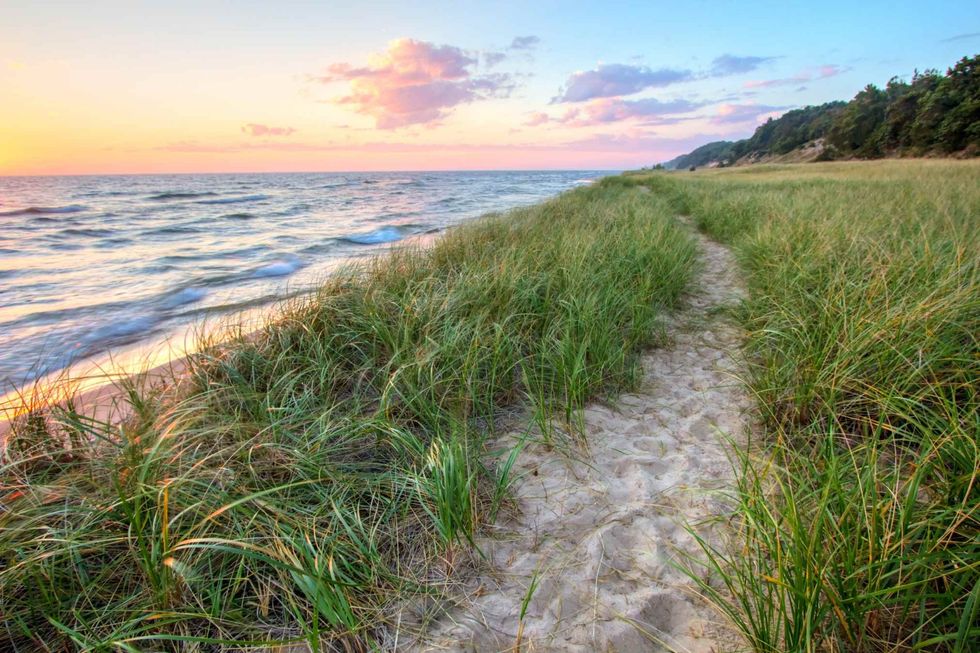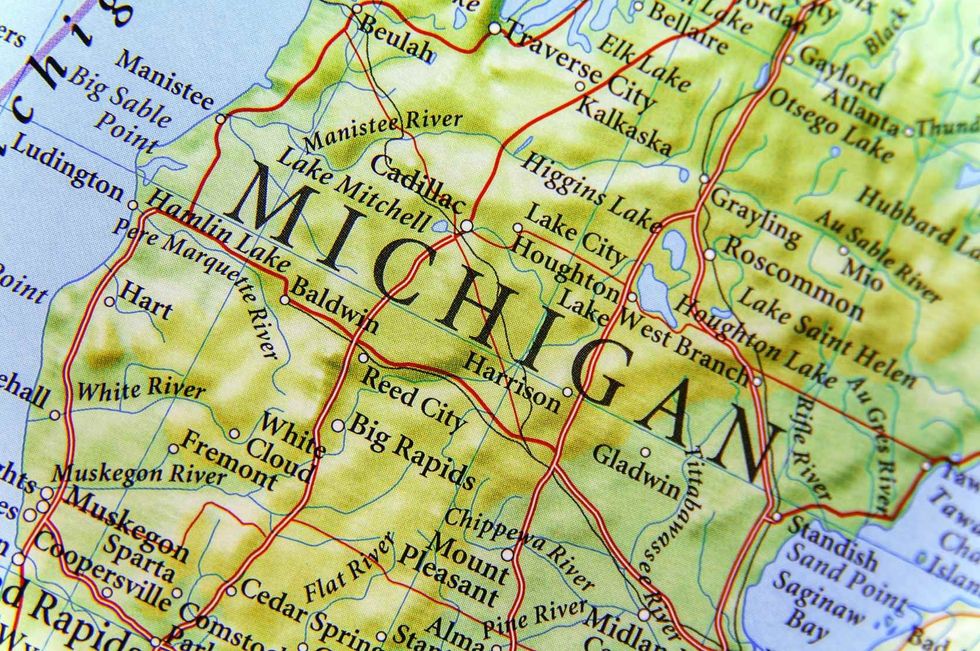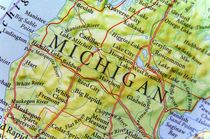69 Curious Facts About Lansing, Michigan That Everyone Should Know!

Lansing, Michigan is a popular state in the United States of America.
Being the capital of Michigan, it enjoys a certain reputation according to capital cities across the world. It is home to many locations of interest for both natives as well as tourists, such as the Michigan State University, the Potter Park Zoo, as well as Michigan Avenue Bridge.
As a place to live, it's extremely favorable due to its lower rent and cost of housing when compared to the rest of the USA! Keep reading to learn more interesting facts about Lansing.
Lansing Geographic Location
Lansing is located at the heart of Michigan, in an area called Mid-Michigan.
- The official area coverage for Lansing as stated by the United States Census Bureau is 36.7 sq m (95 sq km). Of this, 36.1 sq m (93.5 sq km) is land, while the rest is water, covering 0.6 sq mi (1.5 sq km).
- This data also accounts for several 425 agreements, including four with Delta Township (since 2000) as well as two with Meridian Township and Alaiedon Township. There is more area to account for, since the 2010 census there have been 425 additional agreements.
- Among these, there is a land of 1,888.2 acres (7.6 sq km) that DeWitt Township transferred in the year 2011 to Lansing Capital Region International Airport.
- The next 425 agreements were a transfer of land in 2013 that helped expand Jackson National Life Insurance Company.
- As a result of these agreements, the total area for Lansing comes out to be 39.7 sq m (102.8 sq km).
- Although Michigan law states that 425 agreements constitute only temporary arrangements that shouldn't affect the Census data, for statistical reasons these agreements constitute annexations for the Census Bureau.
- Excluding the 425 agreements, Lansing has a total area of 38 sq mi (88 sq km).
- Lansing is located at the intersection of Grand River and Red Cedar River, in the south-central Lower Peninsula of Michigan.
- The present-day Lansing includes annexed in the west (Windsor Township and Delta Charter Township in Easton County), south (Delhi Charter Township in Ingham County), and north (DeWitt Charter Township in Clinton County).
- The state capital has land of 3.5 sq m (9.2 sq km), including parkland of 2.8 sq mi (7.3 sq km), 0.4 sq m (1.1 sq km), and cemetery lands of 0.31 sq m (0.8 sq km). This figure includes Michigan Avenue Park as well as the nearby Waverly Hills Golf Course.
- Combining the data for all land, around 10% of the entire city is open space that is administered publicly.
- Elevation levels for Lansing are anywhere between 890 ft (271 m) above sea level to the south, to around 833 ft (254 m) to 805.5 ft (245 m) above sea level near the river.
- The Grand River, Michigan's state capital largest river, makes its way through Downtown Lansing, while one of its tributaries, the Red Cedar River, finds its way through Michigan State University.
- Yet another tributary, Sycamore Creek, travels through north and southeast Lansing.
- Lake Lansing and Park Lake are the two important lakes in the area, with the former having around 500 acres (2 sq km). Both lakes are situated in northeast Lansing.
- Lake Lansing is a popular tourist destination, favored especially by swimmers and boaters. This lake also hosts various sailing regattas when the weather is favorable, conducted by the Lansing Sailing Club and Michigan State University Sailing Club.
- One of the most memorable areas of Lansing is the Potter Park Zoo, which houses over 500 animals and is specifically tailored to offer memorable experiences for both children as well as families. In 2008, the zoo spent $1.3 million on capital improvements to make the zoo more attractive to audiences, even though attendance had been steadily rising for the last 5 years. In addition to this, in 2009, the zoo undertook a renovation amounting to $1.4 million for its rhinoceros exhibit.
- Other tourist attractions in Lansing include the Impression 5 Science Center, which is a science center designed for children. Offering a unique experience, it is situated within a historic wagon works factory on the central river in the city.
- Visitors to the city can also choose to visit the Michigan Library and Historical Center, which contains one of the largest genealogy collections in all of the United States of America.
- For an informative time, visitors can spend some time at the Michigan Women's Hall of Fame, which elaborates on the historic achievements of Michigan women.
- In addition to these, visitors can also go to the R.E. Olds Transportation Museum, which details the history of Lansing's transportation. Seeing as how Lansing is renowned as the birthplace of the automobile in the USA, this can give tourists a valuable insight into the earliest days of the production of vehicles, as well as its growth trajectory across the centuries!
- Lansing has 22 ZIP Codes some of which include 48910, 48933, and more.
Weather, Temperature, And Seasons Of Lansing
The Great Lakes have a major role in influencing the climate in Lansing. The official USDA classification for Lansing is Hardiness Zone 5b.
- Summers are hot and humid, with moderate to heavy rain. On the other hand, winters can have heavy snowfall.
- When it comes to temperatures, the average temperature that is usually recorded in July is close to 71.8° F (22.1° C), while January experiences 23.2° F (-4.9° C).
- Typically, temperatures either hit or exceed 90° F (32.2 C) on 8.5 days of the year and dip to or below 0° F (-17° C) on about 12 nights.
- Precipitation is highest in the summer, although it is still frequent and considerable in the winter as well.
- The average snowfall is around 51.1 in (129.7 cm) per season, with the usual occurrence being between November and April. Lansing is not typically prone to lake-effect snows, and historical records for seasonal snowfall typically range between 16.6 in (42.1 cm) in 1863-1864 to 97.2 in (246.8 cm) in 1880-1881.
- The tallest building in Lansing is called Boji Tower, and it is located in Downton Lansing.
- A slew of state government buildings dominate the neighborhood landscape in the city, but there have been various improvements to the city dwellings owing to growth in residential development areas as well as retail stores and restaurants.
- There is a historic Old Town Lansing area, which included many significant buildings from the 19th century. In addition to this, the Downtown Lansing area includes a city market, which is one of the oldest operating farmers markets to date in all of the United States.
- The REO Town lies directly below downtown, opposite the Interstate 496 highway. The name comes from Ransom Eli Olds' home, which directly faced factories that lined the streets of Washington Avenue. It was ultimately displaced by the Interstate 496 highway.
- There are four sections of Lansing presently: Northwest side, Eastside, Westside, and Southside.
- East Lansing has the most diversity in all of the Lansing neighborhoods, and its commercial districts are Michigan Avenue and Kalamazoo Street. At the easternmost edge of the Eastside, it is surrounded by Frandor Shopping Center.
- The Northwest side of Lansing can be seen across the north and west borders of the city, where it takes up the least space in the entirety of its geography. Although it is the smallest of all the four sections, it includes somewhat populated residential areas alongside ample greenery. Here, you will also find the Capital Region International Airport, while north of the river you'll find a train line that runs across the rest of Lansing as well.
- West Lansing houses the city's most diverse population in socio-economic terms. It consists mostly of residential areas and has a small commercial area along Saginaw Street. In everyday reference, the westside of Lansing includes the downtown area, but it is also considered to be a separate area.
- The Southside of Lansing is the most populated part of Lansing, followed closely by east Lansing. With most of this area being residential, there are various commercial strips along Pennsylvania Avenue, Martin Luther King, Jr. Boulevard, as well as Cedar Street, which run north to south. Citizens of Southside Lansing mention that the local authorities need to do a better job of taking care of this area, as a lot of the focus from the authorities has gone on maintaining the east and west sides of Lansing.

How did Lansing, Michigan get its name?
The story of how Lansing got its name is a fascinating one and begins with a discovery!
- In 1790, Hugh Leward discovered Lansing as he canoed across the Grand River.
- At the time, this land was surveyed under the title of 'Township 4, North Range 2 West.'
- The land finally went on sale in October 1830, as it was one of the last townships to be surveyed.
- One of the first names for the place that became Lansing was 'Biddle City'
- This name was coined by unidentified brothers in late 1835 or early 1836, who discovered the area now called REO Town, located below downtown Lansing.
- Up until that point, there were no roads to this area.
- These brothers also sold plots for this area in Lansing, New York.
- 16 men paid for plots in the city, which was not yet called Lansing, and discovered that they had been duped.
- This area would later become Metropolitan Lansing (or Greater Lansing), as inhabitants of the area moved to a nearby habitable area.
- The exact location where the plots had been sold came to be called Lansing Township, as a reference to the village in New York.
- Lansing Township officially became the capital of Michigan in 1847, ten years after Michigan itself became a city. It became the capital because the state needed development in the west.
- The Michigan House of Representatives chose Lansing Township as the capital of Michigan owing to political tensions. Among the many cities between which they had to choose were Ann Arbor, Jackson, and Marshall. Owing to the political turmoil surrounding these cities, the House of Representatives found it more reasonable to choose Lansing Township as the capital city.
- This announcement was initially derided because the capital was a nondescript city at the time.
- In 1848, the Michigan House of Representatives gave the city the name Lansing, thus formally deciding the new title for Michigan's capital city.
- After this announcement was made, it took a few months for people to flock to Lansing as a city, and the population was divided across three sections, the lower, middle, and upper village.
- The lower village is where Old Town is situated today and was the oldest of all the villages at the time.
- The middle village developed at the very end of the timeline. Now, we can find the Michigan Avenue Bridge here, the capitol building, as well the Cooley Law School Stadium. This place is now called Greater Lansing.
- The upper village is the meeting point of the Grand River and the Red Cedar River and has become a historical center with regard to the cultural evolution of Michigan State Capitol.
- Lansing became an industrial powerhouse in 1897 when the Olds Motor Vehicle Company was founded in August that year.
- This company would later come to be known as the REO Motor Car Company, making its mark as a major American industrial center across the next seven decades as the city continuously grew in population as well as expanded its city borders.
- As a result of these advancements, it currently has a diversified economy across several sectors including manufacturing, banking, insurance, healthcare, and education.
What are people from Michigan called?
The people who hail from Lansing are called 'Lansingites' or 'Lanstronauts.' There are many more interesting facts about Michigan as well!
- The Metropolitan locale in which Lansing is situated is referred to as Mid-Michigan.
- Although Lansing is a US capitol, it is the only one that isn't also a county seat.
- Lansing is located almost entirely in Ingham County, and the official seat from Ingham County is Mason.
- The Michigan State Capitol building is also located in the same county.
- The 2010 census noted the city's population at 114,297, which made it Michigan's fifth-largest city.
- Other estimates of its population were 464,036 when considering the Metropolitan Statistical area. When considering the Combined Statistical Area population, the figure was 534,684. The latter figure also included the population of Shiawassee County.
- Towards the north of the city, it extends into Clinton County, while in the west it extends into Eaton County.
- Michigan's capital city has a lot of options for education, including veterinary schools, nursing schools, law schools, and medical schools.
- The occupation of law finds particular preference in Michigan's history, the city houses the state Supreme Court, a federal court, as well as the Court of Appeals.
- Other points of interest in the city include four insurance companies' headquarters, the library of Michigan and Historical Center, the Michigan Historical Museum, as well as the Jackson Field, formerly known as the Cooley Law School Stadium.
Did You Know?
Let's read some more interesting facts about the place.
- As of 2019, the population of Lansing was 112,644.
- Lansing is known for its flavorful food. Some special foods from here are olive burgers and pastries.
We Want Your Photos!
More for You
Master of Computer Science

Abhijeet ModiMaster of Computer Science
An experienced and innovative entrepreneur and creative writer, Abhijeet holds a Bachelor's and Master's degree in Computer Application from Birla Institute of Technology, Jaipur. He co-founded an e-commerce website while developing his skills in content writing, making him an expert in creating blog posts, website content, product descriptions, landing pages, and editing articles. Passionate about pushing his limits, Abhijeet brings both technical expertise and creative flair to his work.
Disclaimer
1) Kidadl is independent and to make our service free to you the reader we are supported by advertising. We hope you love our recommendations for products and services! What we suggest is selected independently by the Kidadl team. If you purchase using the Buy Now button we may earn a small commission. This does not influence our choices. Prices are correct and items are available at the time the article was published but we cannot guarantee that on the time of reading. Please note that Kidadl is a participant in the Amazon Services LLC Associates Program, an affiliate advertising program designed to provide a means for sites to earn advertising fees by advertising and linking to Amazon. We also link to other websites, but are not responsible for their content.
2) At Kidadl, we strive to recommend the very best activities and events. We will always aim to give you accurate information at the date of publication - however, information does change, so it’s important you do your own research, double-check and make the decision that is right for your family. We recognise that not all activities and ideas are appropriate for all children and families or in all circumstances. Our recommended activities are based on age but these are a guide. We recommend that these ideas are used as inspiration, that ideas are undertaken with appropriate adult supervision, and that each adult uses their own discretion and knowledge of their children to consider the safety and suitability. Kidadl cannot accept liability for the execution of these ideas, and parental supervision is advised at all times, as safety is paramount. Anyone using the information provided by Kidadl does so at their own risk and we can not accept liability if things go wrong.
3) Because we are an educational resource, we have quotes and facts about a range of historical and modern figures. We do not endorse the actions of or rhetoric of all the people included in these collections, but we think they are important for growing minds to learn about under the guidance of parents or guardians.







